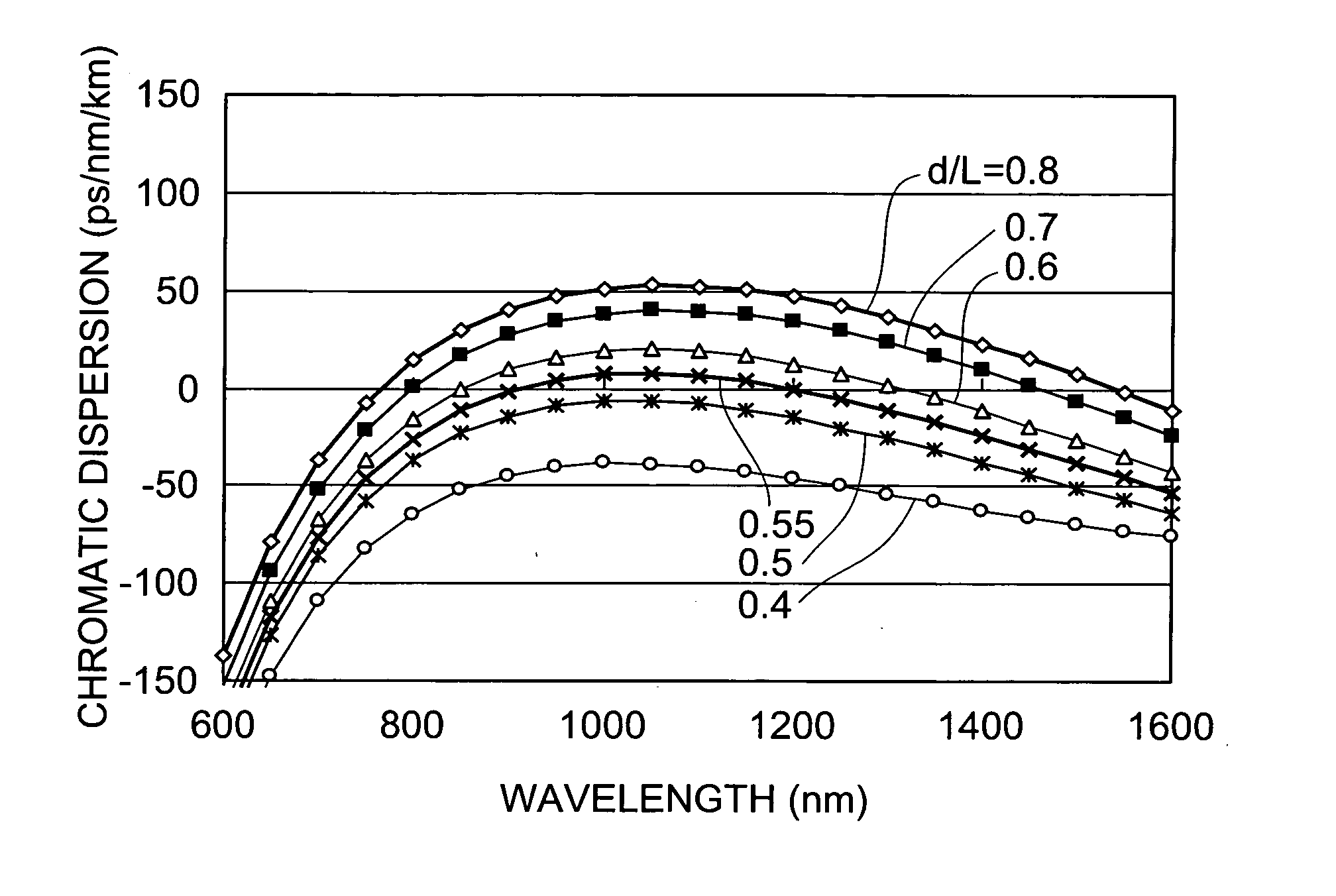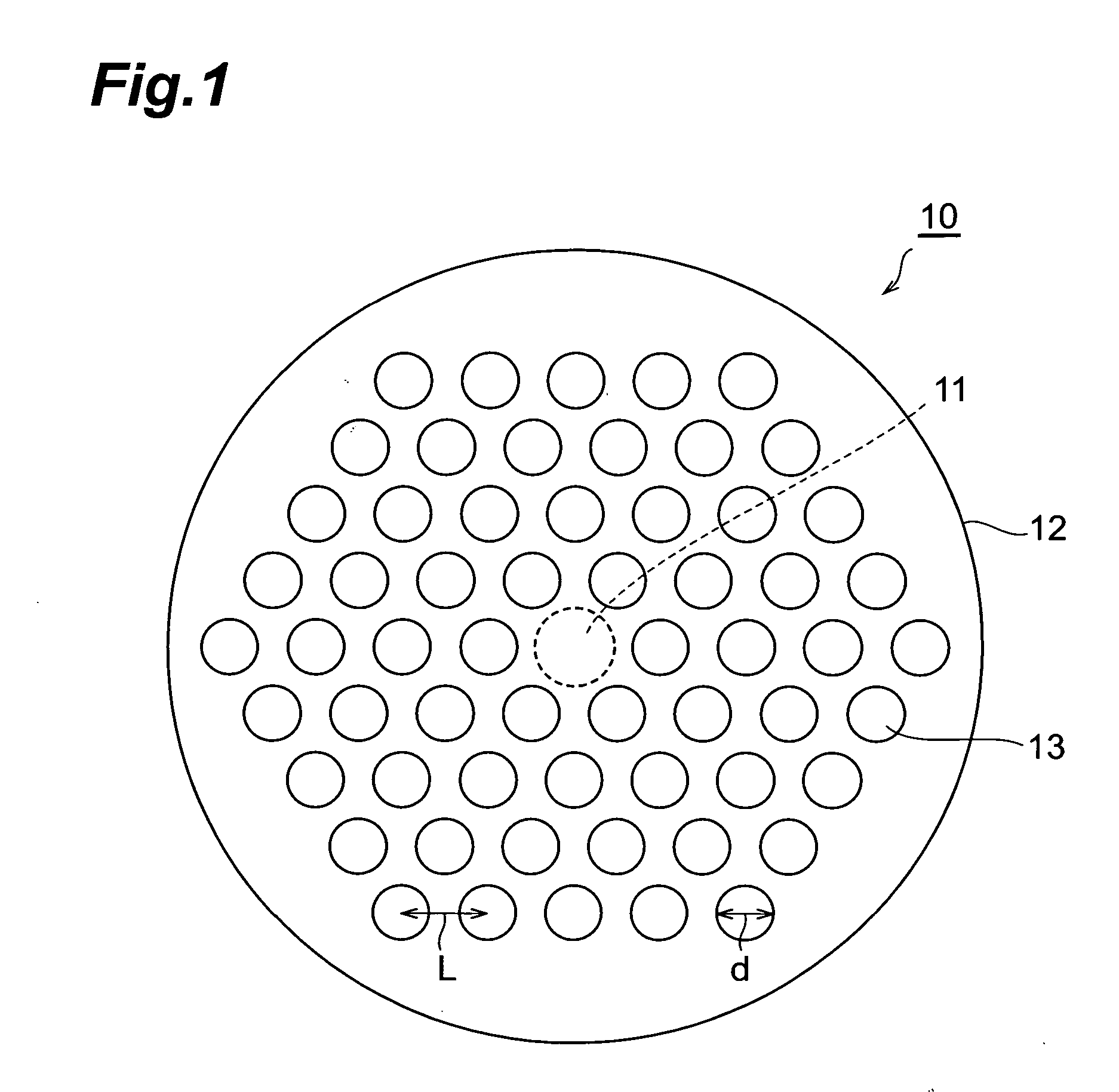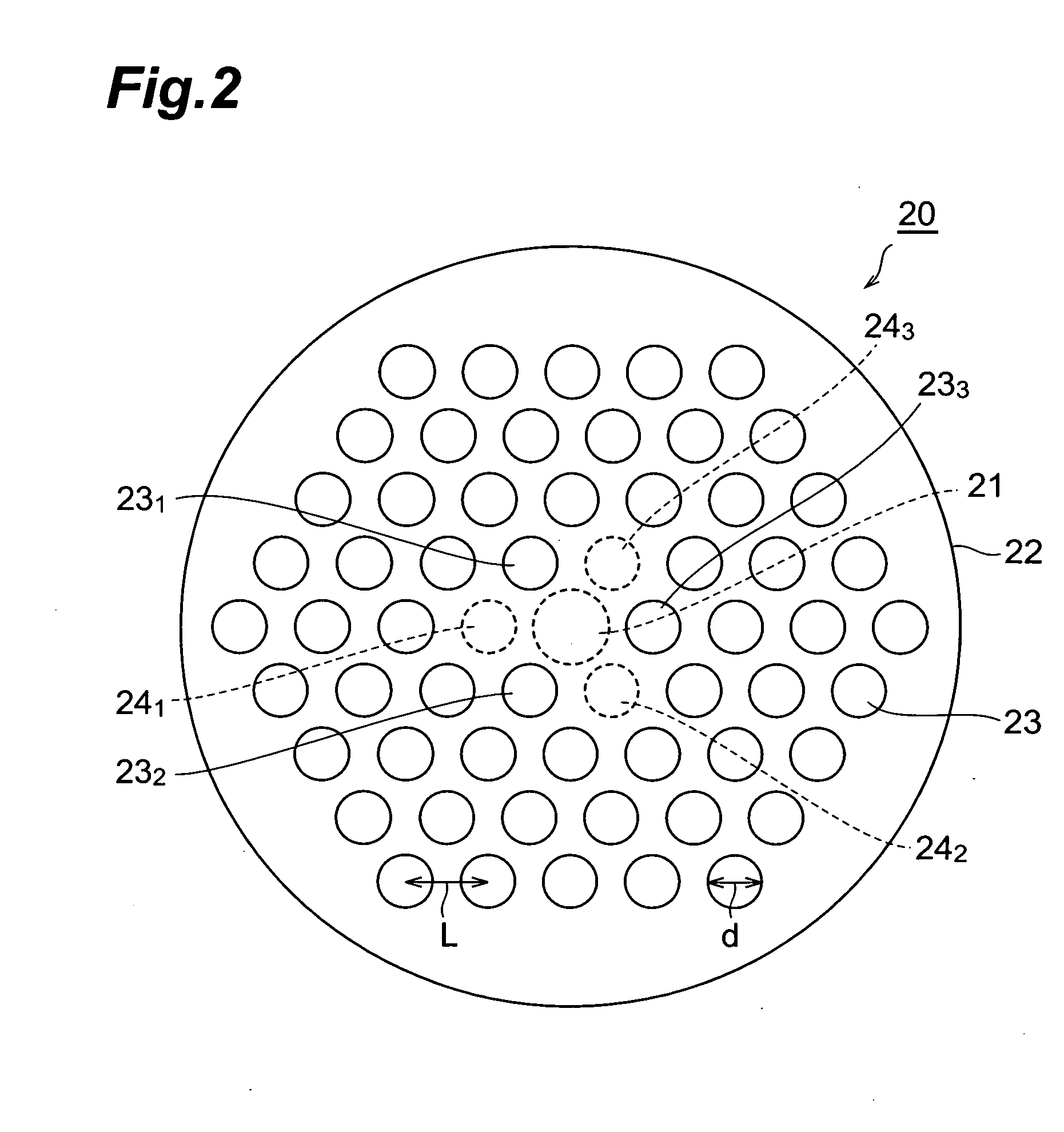Optical fiber
a technology of optical fiber and holey fiber, which is applied in the field of holey fiber, can solve the problems of high manufacturing cost of holey fiber, difficult to put holey fibers to practical use in the signal light wavelength range, and low transmission loss of holey fiber
- Summary
- Abstract
- Description
- Claims
- Application Information
AI Technical Summary
Benefits of technology
Problems solved by technology
Method used
Image
Examples
first embodiment
[0037] First, a first embodiment of an optical fiber according to the present invention will be described. FIG. 2 is a view illustrating the cross-sectional configuration of the optical fiber according to the first embodiment of the present invention. There is illustrated, in FIG. 2, the placement of plural holes 23 in a cross section orthogonal to the longitudinal direction of the optical fiber 20 according to the first embodiment.
[0038] The optical fiber 20 according to the first embodiment comprises a solid core region 21 extending along the longitudinal direction of the fiber 20 (the direction perpendicular to the paper face) and a cladding region 22 provided around the outer periphery of the core region 21, wherein there are provided, in the cladding region 22, with the plural holes 23 having a round-shaped cross-section and extending along the longitudinal direction. The portion of the cladding region 22 other than the holes 23 and the core region 21 are constituted of silica...
second embodiment
[0045] First, a second embodiment of an optical fiber according to the present invention will be described. FIG. 3 is a view illustrating a cross-sectional configuration of the optical fiber according to the second embodiment of the present invention. There is similarly illustrated, in FIG. 3, the placement of plural holes 33 in a cross-section orthogonal to the longitudinal direction of the optical fiber 30.
[0046] The optical fiber 30 according to the second embodiment illustrated in FIG. 3 comprises a solid core region 31 extending along the longitudinal direction of the fiber 30 (the direction perpendicular to the paper) and a cladding region 32 provided around the outer periphery of the core region 31, wherein there are provided, in the cladding region 32, with the plural holes 33 having a round-shaped cross-section and extending along the longitudinal direction. The portion of the cladding region 32 other than the holes 33 and the core region 31 are comprised of silica glass a...
modified embodiment
[0053] In the optical fiber 20 according to the first embodiment having the aforementioned configuration (FIG. 2), the holes 23 constituting the first layer closest to the core region 21 are placed such that the arrangement thereof has three-fold rotational symmetry about the core region 21. Further, the holes 23 constituting the respective remaining layers are placed such that the arrangement thereof has six-fold rotational symmetry about the core region 21. On the other hand, in the optical fiber 30 according to the second embodiment (FIG. 3), the holes 33 constituting the first and second layers positioned in order from the core region 31 are placed such that the arrangement thereof has three-fold rotational symmetry about the core region 31. The holes 33 constituting the remaining third and fourth layers are placed such that the arrangement thereof has six-fold rotational symmetry about the core region 31. Here, it is preferable that the center of the hole arrangement correspond...
PUM
| Property | Measurement | Unit |
|---|---|---|
| Length | aaaaa | aaaaa |
| Length | aaaaa | aaaaa |
| Length | aaaaa | aaaaa |
Abstract
Description
Claims
Application Information
 Login to View More
Login to View More - R&D
- Intellectual Property
- Life Sciences
- Materials
- Tech Scout
- Unparalleled Data Quality
- Higher Quality Content
- 60% Fewer Hallucinations
Browse by: Latest US Patents, China's latest patents, Technical Efficacy Thesaurus, Application Domain, Technology Topic, Popular Technical Reports.
© 2025 PatSnap. All rights reserved.Legal|Privacy policy|Modern Slavery Act Transparency Statement|Sitemap|About US| Contact US: help@patsnap.com



